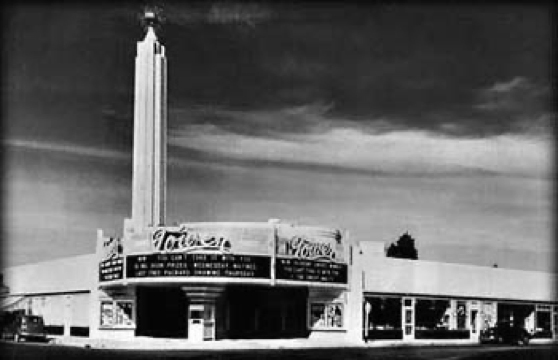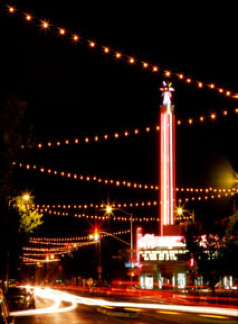History of the Tower District
The Tower District is an older, central city neighborhood in Fresno, California. In the 1880’s what is now the Tower District was quite a far piece from downtown Fresno, nearly 45 minutes away by a good horse and buggy and an hour by foot. The district emerged in the early 1900’s as a streetcar suburb of a rapidly growing Fresno. By the 1940’s its namesake (the Tower Theatre) had been built and the district had evolved into a dense, diverse, thriving neighborhood.
Although it struggled at times during the post World War II years, it never declined into complete abandonment and disrepair that many other older neighborhoods experienced during the same period. In the late eighties the Tower District began a bit of a renaissance, spurred mainly by an active citizenry, the draw of unique, pedestrian-friendly neighborhoods, and the lively, pedestrian-oriented atmosphere of the commercial core of the neighborhood along Olive Avenue. This renaissance spawned the creation of the Tower District Specific Plan which was adopted by city ordinance in 1991.
Today the commercial center of the Tower District serves as Fresno’s predominant arts and entertainment district. Unique for its art deco architecture and its pedestrian oriented design, its character is set by entertainment uses and restaurants, including cafes, nightclubs, performing arts facilities, theaters, bakeries, delis, and a wide variety of specialty retail establishments selling used books, designer clothing, gourmet foods, and other goods. Immediately adjacent to the commercial core is a dense arrangement of offices, apartments, and single-family homes.



